How A New Generation Decorates
The Cosmopolitan
With the help of decorator Tony Ingrao, Nanna Stern unites Copenhagen, Rome, and a touch of American Impressionism in an uptown apartment.
The sun streaming into Nanna Lydiker Stern’s living room might have been made to order along with the curtains shot with gold thread. In the blond light, the sea form silk on the eighteenth-century chairs and the creamy gold of the Savonnerie rug are luminous. “I love the subtleness,” Stern says. “It’s nice to come up here and breathe after the gritty streets of New York.”
Her neoclassical haven had unlikely beginnings. When Stern and her husband first saw the Upper East Side apartment, it was full of built-out cabinetry and built-in banquettes, a lowered ceiling in one room, and a raised floor. But the young couple recognised quality raw material. They would start fresh and unite their backgrounds to create their first real home.
Born in Denmark and raised in Italy, Stern has a love of classical design and eighteenth-century furniture that guided the period choice. The neoclassical result, dubbed “a hybrid of Rome and Copenhagen” by designer Tony Ingrao, is so personal that everyone involved says it “looks like Nanna.” That may be why her husband, an investment manager, prefers to let his wife do the talking. He is represented, though, in the open yet classical architecture, and in the paintings of his hometown, New Hope, by Pennsylvania Impressionists Danial Garber and Edward Redfield.
For help in interpreting all of this in 3,500 square feet, the couple hundred turned to Skidmore, Owings & Merrill and to Ingrao. SOM design partner Stephen Apking produced a book of the eighteenth-century Scandinavian castles. “The book became the bible,” Stern says.
The existing central entrance was a natural starting point for the classical renovation. SOM added a small domed foyer onto the hall. “From there, you see in four directions at once,” senior designer Eric Alch explains. “It’s a series of rooms that open up to eachother.”
Scandinavian accents are everywhere: unstained plank floors, a blue and yellow beamed ceiling in the master bedroom, a wood floor with blue stencilling in the guest bedroom. Italy is represented in the library’s frescoes and in the murals in the entry and dressing rooms. “It’s important to have openness, but also a level of richness and detail,” Alch says.
Ingrao’s contributions – primarily fabrics, color, and furniture – also work on two levels. The floral silk of the sitting room curtains is beautiful from afar; up close it’s wondrously intricate – the flowers are hand-painted, and two different threads were used in the weft and the weave.
Such subtle informed every decision. Ingrao suggested the seafood in the living room to replace the original crimson upholstery. “The ethereal quality was being lost; the green grounds you but lets you float.” His favourite aspect of the design is the wall paint: “It’s truly elegant. There’s a freshness, a lightness to the walls. That’s what makes the apartment sing.”
The song is often a duet. Stern and her husband chose much of the furniture. “Walking around and knowing where every object comes from, and having picked it because we thought it was beautiful, gives us great pleasure,” Stern says. The couple plan to teach their son, Sebastian, age one, to respect these objects, and hope he will come to love them, too.
– Tony Ingrao
The sun streaming into Nanna Lydiker Stern’s living room might have been made to order along with the curtains shot with gold thread. In the blond light, the sea form silk on the eighteenth-century chairs and the creamy gold of the Savonnerie rug are luminous. “I love the subtleness,” Stern says. “It’s nice to come up here and breathe after the gritty streets of New York.”
Her neoclassical haven had unlikely beginnings. When Stern and her husband first saw the Upper East Side apartment, it was full of built-out cabinetry and built-in banquettes, a lowered ceiling in one room, and a raised floor. But the young couple recognised quality raw material. They would start fresh and unite their backgrounds to create their first real home.
Born in Denmark and raised in Italy, Stern has a love of classical design and eighteenth-century furniture that guided the period choice. The neoclassical result, dubbed “a hybrid of Rome and Copenhagen” by designer Tony Ingrao, is so personal that everyone involved says it “looks like Nanna.” That may be why her husband, an investment manager, prefers to let his wife do the talking. He is represented, though, in the open yet classical architecture, and in the paintings of his hometown, New Hope, by Pennsylvania Impressionists Danial Garber and Edward Redfield.
For help in interpreting all of this in 3,500 square feet, the couple hundred turned to Skidmore, Owings & Merrill and to Ingrao. SOM design partner Stephen Apking produced a book of the eighteenth-century Scandinavian castles. “The book became the bible,” Stern says.
The existing central entrance was a natural starting point for the classical renovation. SOM added a small domed foyer onto the hall. “From there, you see in four directions at once,” senior designer Eric Alch explains. “It’s a series of rooms that open up to eachother.”
Scandinavian accents are everywhere: unstained plank floors, a blue and yellow beamed ceiling in the master bedroom, a wood floor with blue stencilling in the guest bedroom. Italy is represented in the library’s frescoes and in the murals in the entry and dressing rooms. “It’s important to have openness, but also a level of richness and detail,” Alch says.
Ingrao’s contributions – primarily fabrics, color, and furniture – also work on two levels. The floral silk of the sitting room curtains is beautiful from afar; up close it’s wondrously intricate – the flowers are hand-painted, and two different threads were used in the weft and the weave.
Such subtle informed every decision. Ingrao suggested the seafood in the living room to replace the original crimson upholstery. “The ethereal quality was being lost; the green grounds you but lets you float.” His favourite aspect of the design is the wall paint: “It’s truly elegant. There’s a freshness, a lightness to the walls. That’s what makes the apartment sing.”
The song is often a duet. Stern and her husband chose much of the furniture. “Walking around and knowing where every object comes from, and having picked it because we thought it was beautiful, gives us great pleasure,” Stern says. The couple plan to teach their son, Sebastian, age one, to respect these objects, and hope he will come to love them, too.
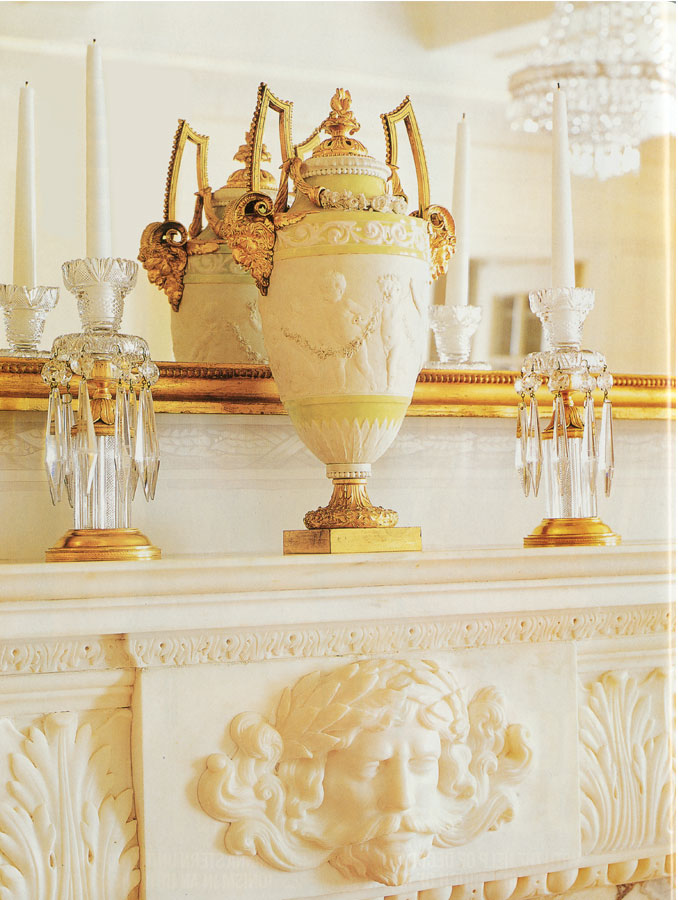
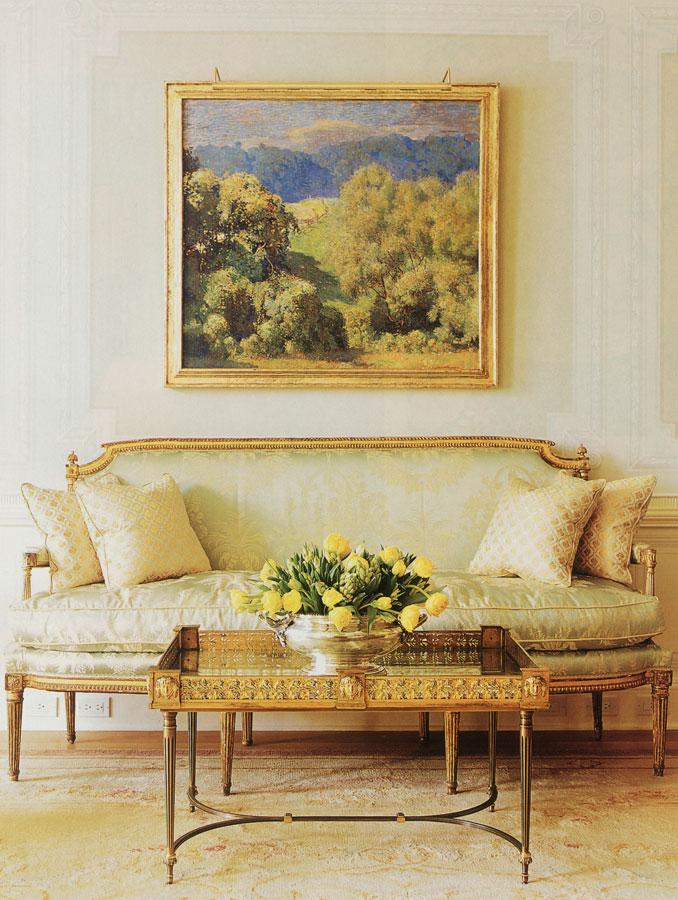
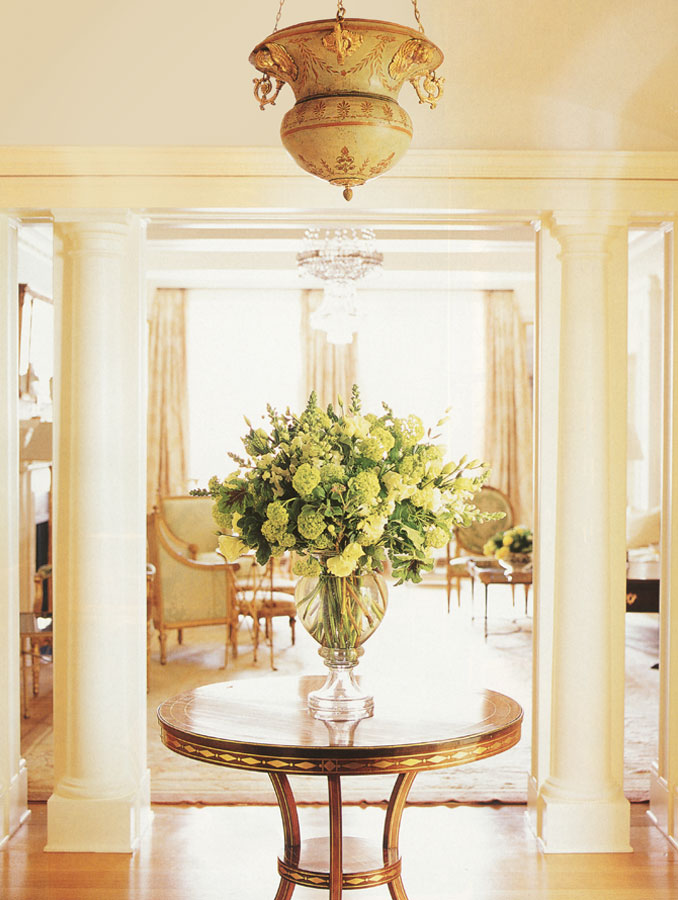
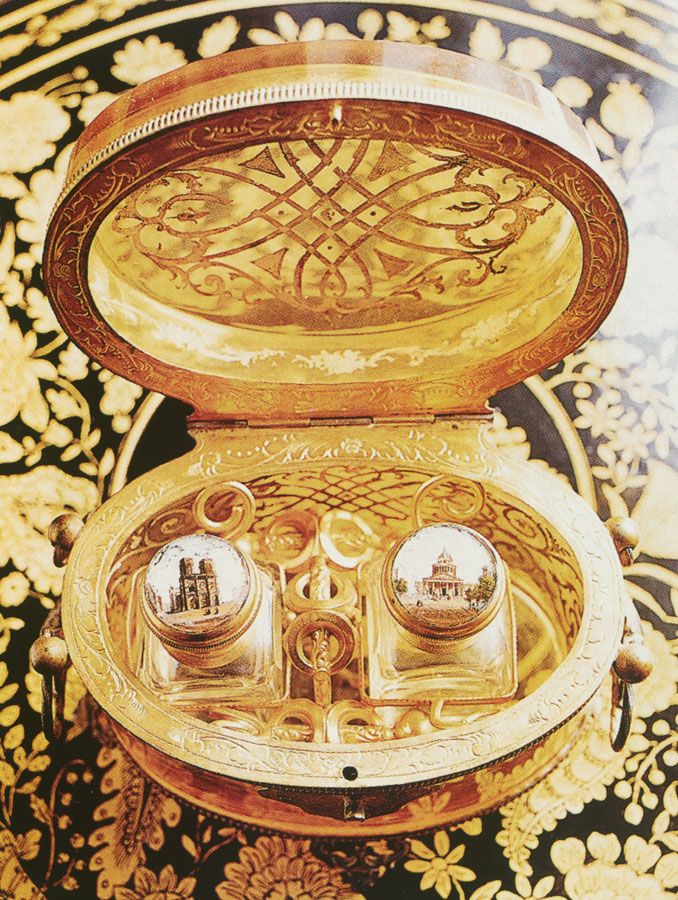
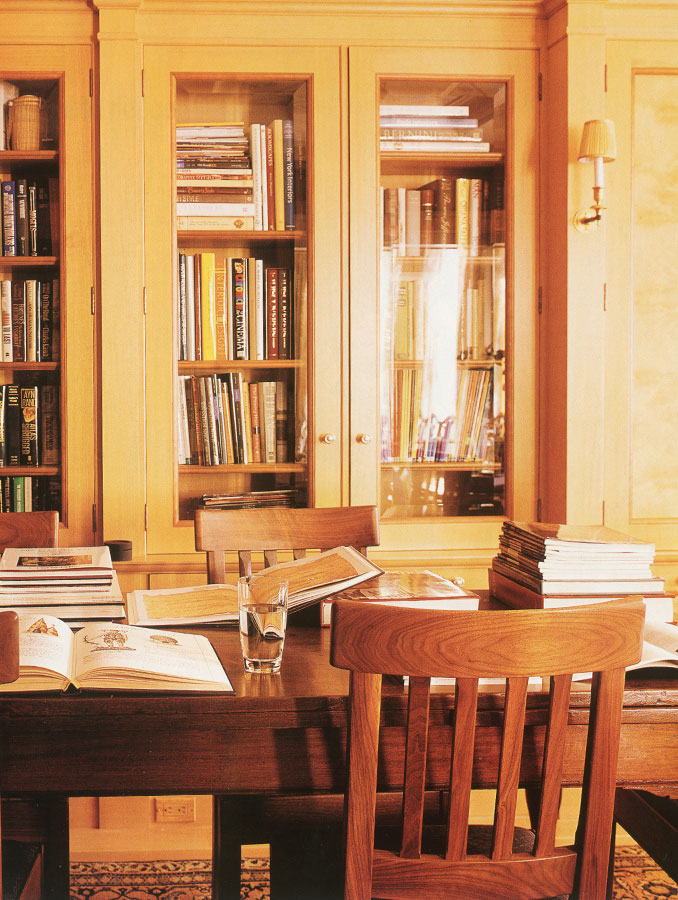
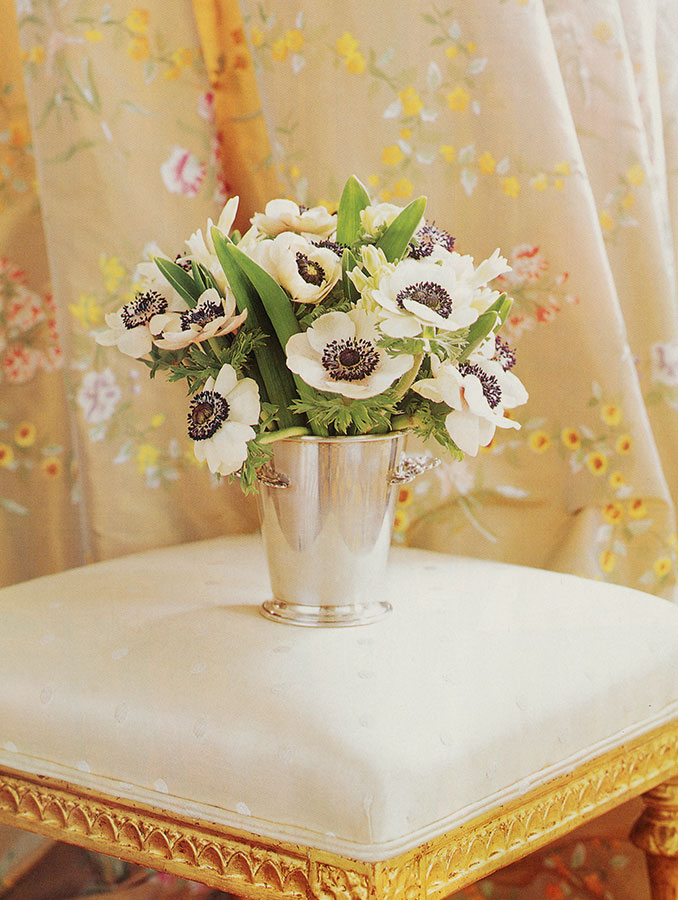
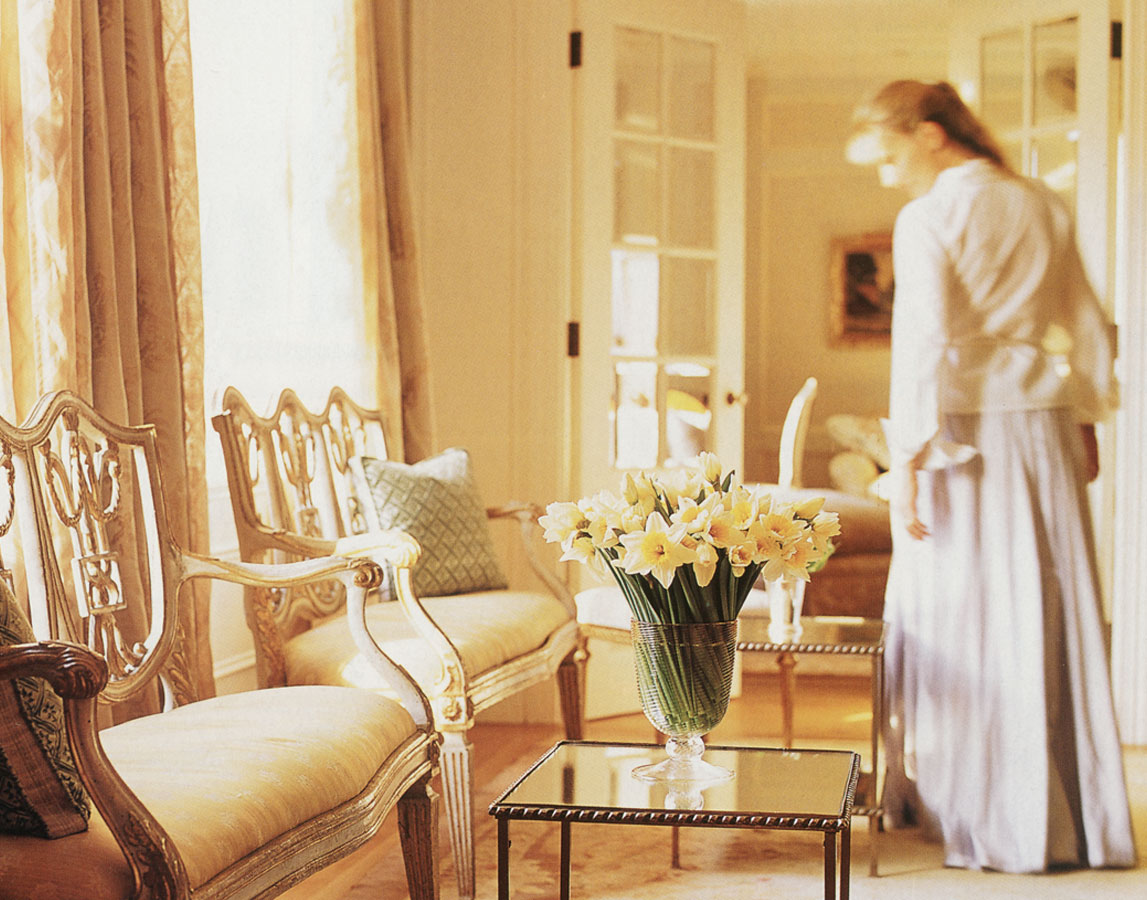
Back to Press
